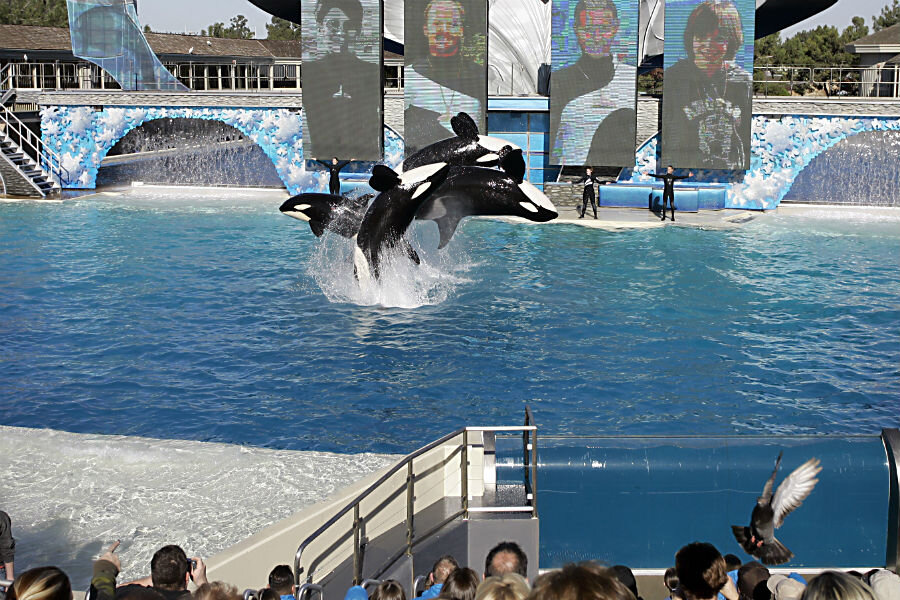SeaWorld ends controversial orca shows: Why activists want more
Loading...
SeaWorld announced Monday that the controversial orca shows would end at its San Diego park – and activists cheered.
But the applause quickly faded as the details emerged.
SeaWorld Entertainment Inc. plans to phase out the current orca show – one that features killer whales flipping, splashing, and doing other stunts on cue – by 2017. The old show, that began in the 1960s, will be replaced by one more in line with the whales’ natural behaviors and environment, SeaWorld CEO Joel Manby told investors.
Mr. Manby hopes that shift will help appease disgruntled customers. ”They want the orca experience to be activities the whales do in the wild," he told the Associated Press. "Things they perceive as tricks, they don't like as well."
But, he hinted, this change will not be “universal across our properties.” SeaWorld’s other parks, in San Antonio and Orlando, will continue to run the iconic killer whale show.
Even at the San Diego park the change is not enough for activists.
“Much more needs to be done,” California Democratic Rep. Adam Schiff told The San Diego Union-Tribune. “I would urge the company to curtail the breeding of their orcas and partner in the creation of ocean sanctuaries.”
Representative Schiff plans to put forth federal legislation to ban breeding of captive orcas.
"The fact still remains that as long as SeaWorld holds orcas in captivity, the physical and psychological problems associated with their captivity will persist," Schiff told the Associated Press.
California state Assemblywoman Lorena Gonzalez (D) of San Diego told the Union-Tribune, “Today’s acknowledgement by SeaWorld does not end our push to halt inhumane orca captivity and breeding practices, but it’s a step in the right direction.”
The iconic “Shamu” killer whale show drew many tourists in the 1970s, skyrocketing SeaWorld to success. But the documentary “Blackfish” cast a shadow on that popularity.
The film, released in 2013, looked at the impact of captivity on orcas, focusing particularly on the story of Tilikum and trainer Dawn Brancheau, who died after the killer whale pulled her into a pool in 2010 at the Orlando park.
The popular documentary sparked outrage from animal rights activists, led to boycotts and to legislation that would curb SeaWorld's orca exhibit.
With such bad press, it’s no surprise SeaWorld has been struggling financially.
As of Monday, the company's stock price was down 54 percent from a peak in May 2013. The Union-Tribune reports that profit had fallen by 75 percent from the previous 12-month period from June to June.
The Los Angeles Times published an editorial adding to the growing narrative that SeaWorld’s announcement Monday is not enough.
The LA Times editorial staff writes:
SeaWorld would be better off ending its breeding program, allowing its orca population to die out naturally — which would still give it decades of exhibition — and reserving its tanks for injured animals that cannot survive in the wild....
The documentary "Blackfish," dismissed as inaccurate by the company, has nonetheless strengthened a growing public sense that keeping orcas in captivity is wrong. Attendance at the marine park has been down, and it's unclear whether paying customers will buy the idea that a killer whale in a nicer-looking tank is contented, any more than they bought Sea World's assertion that the performing orcas were willing and happy collaborators in their training and shows for big — though shrinking — crowds.
This report includes material from the Associated Press.








